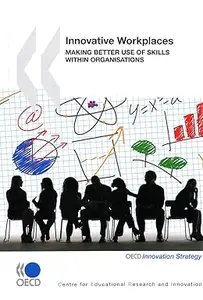
Free Download Organisation for Economic Co-Operation and Development, "Innovative Workplaces: Making Better Use of Skills Within Organisations"
English | 2010 | pages: 151 | ISBN: 9264095675 | PDF | 1,1 mb
As human capital is the source of innovation, one of the policy principles of the OECD Innovation Strategy is to ""foster innovative workplaces"". Education and training systems must rise to the challenge of providing people with the means to learn and re-train throughout their life. Companies and organisations need to maximise the human resources they have at their disposal.
Do employers make the best use of peoples skills for innovation? Are some work organisations more associated with innovation than others? If so, are these organisations more widespread in some countries than in others? Are they associated with particular labour market policies, managerial practices, learning cultures or certain levels of education? What are the challenges for innovation within organisations?
This volume shows that interaction within organisations - as well as individual and organisational learning and training - are important for innovation. The analytical tools and empirical results this study provides show how some work organisations may foster innovation through the use of employee autonomy and discretion, supported by learning and training opportunities.
Innovative Workplaces will be of interest to policy makers in the fields of education, employment and innovation as well as business leaders, academics and all readers interested in social issues.
Table of Content :
Executive summary Introduction
Chapter 1. Defining learning organisations and learning cultures
Chapter 2. Mapping learning organisations and their characteristics for the European Union
-Mapping learning organisations for the EUThe role of learning cultures
-Linking learning organisations to institutional context
-Employee learning in public sector establishments
-Summary
-Annex 2.A1. Graphical representation of factor analysis in the European Working Conditions Survey (EWCS) 2000: 15 organisational variables
-Annex 2.A2. Multilevel logistic model used in Chapter 2
Chapter 3. Measuring trends: the work complexity paradox
-Data and measurement frame
-A decreasing trend in work complexity
-Taking into account structural factors in a multilevel model
-Uncovering the work complexity paradox
-Summary
-Annex 3.A. Multilevel model used in Chapter 3
-A benchmark regression to identify within-country and between-country variance
-Four models
Chapter 4. Behind innovation: employer and employee trade-offs
-Designing adaptive or learning organisational structures
-Organisational change, innovation and employee outcomes
-Summary
-Annex 4.A. Multilevel learning organisation metrics based on the European Union Meadow Project
Conclusion
-Policy programmes
